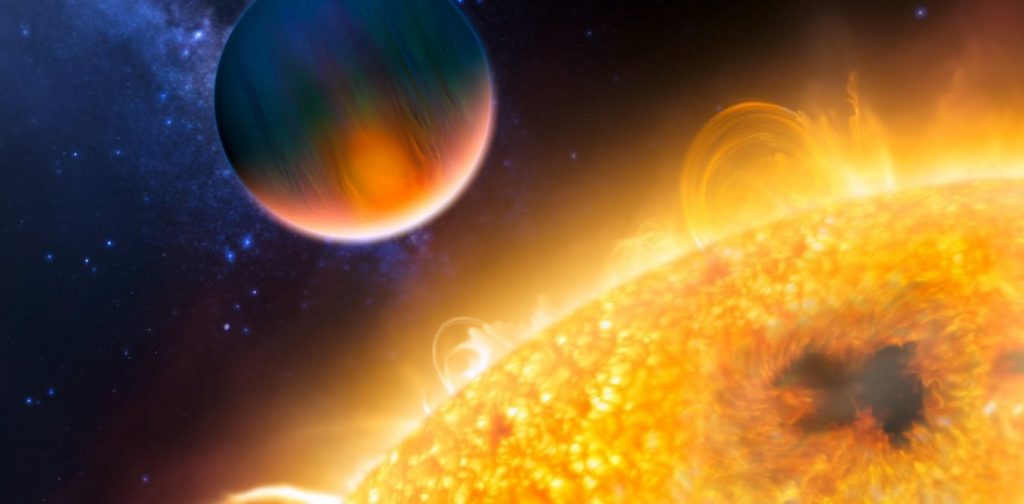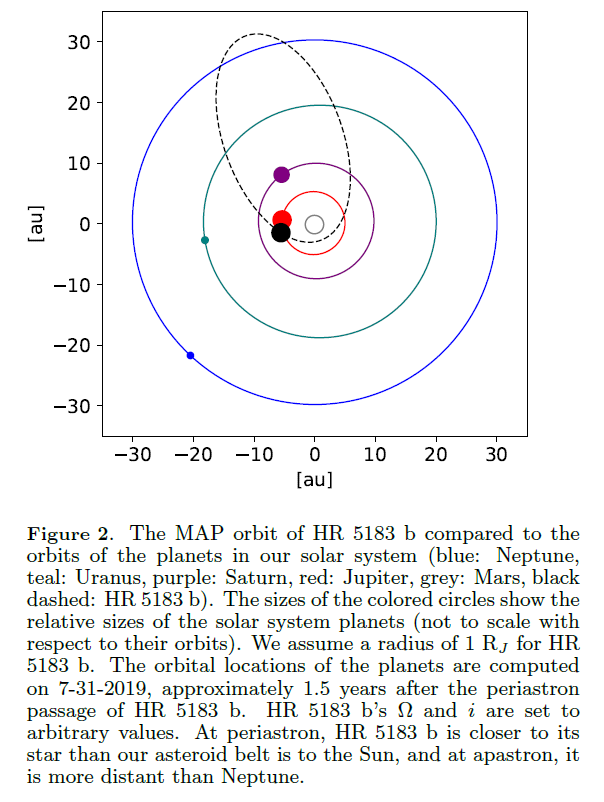
When we think of a planet in orbit around a star, we have been conditioned to believe the path of the orbit traces out a circle. Unfortunately, this is incorrect; and even worse, science has known this to be incorrect for hundreds(!) of years. Dating back to 1609, the famous astronomer Johannes Kepler published his famous three laws, the first of which states: the orbit of a planet is in the shape of an Ellipse with the Sun at one of the two foci.
But what is an ellipse? Well, it’s almost like a circle, in fact a circle is just a very special ellipse (more on that in a second). An ellipse looks like a circle that has been squished, almost like an oval. The defining features of an ellipse are the two foci (plural of focus). The foci are two points that make up a line from which the sum of the distance from each focus to any point on the ellipse is a constant. Wow. That was a mouthful. I’m sure there are more questions now than answers. Check out the picture/gif, and then you too can draw your own ellipses.
But now back to the circle…a circle is just an ellipse where both foci are at the same spot! So you are only technically wrong when you say the orbit of the planets are circles; sometimes they actually are just circles. But most of the time, they have a slight eccentricity. Eccentricity is a measure of how much an ellipse deviates from a perfect circle. It is measured from zero to one, with zero being a perfect circle and one being a hyperbola. Every planetary orbit has an eccentricity, and most are close to zero. On the other hand, objects like asteroids and comets can have unbounded orbits with an eccentricity close to one!
In fact, of the 3262 confirmed exoplanets with well-studied orbits, only sixty-eight(!) have eccentricities larger that 0.5. For those keeping score at home, that’s only 2%! However, this is a misleading statistic. It is far easier for astronomers to find planets with more circular orbits (smaller eccentricities) than it is for them to find highly eccentric planets. This is what’s called Observation Bias in the biz (perhaps a future post on this). That’s what makes a new discovery all the more fascinating…
A team of astronomers from Caltech headed by graduate student Sarah Blunt, and alongside astronomers across California, including UC Irvine’s own Prof. Paul Robertson, have announced the discovery of a planet with an eccentricity of 0.93! This unusual new planet is a gas giant, like our Jupiter. The planet weighs in at just over three times the mass of Jupiter, and it orbits a star just like our Sun: HR 5183. This wacky orbit takes seventy-four years to complete, take a look at Figure X for a diagram from the paper showing the shape of the orbit overlaid on top of the orbit of some of our own Solar System’s planets. Such a wild orbit means that most of this planet’s “year” is spent moving very slowly and very far from its host star. But then, the planet begins to speed up faster and faster as it gets closer to its host star until it slingshots around very quickly and immediately begins to decelerate as it flies out to the farthest stretch of its orbit again. From a detailed analysis, the team was able to determine that in one orbit, the planet spends 16 times more of its year near its perihelion (the point where the planet and star are closest together) than near its aphelion (the point where the planet and star are farthest apart). Truly a rollercoaster of an orbit!
But what could have caused this? The team’s first thought was to check the system for a companion star. Just from running simulations, they knew that the easiest way to create a highly eccentric orbit is if there is a third mass in the system, besides the host star and the planet, which could tug the planet into such an orbit. A companion star could be the culprit responsible for creating this crazy orbit. However, while they found another nearby star that might be a companion, the star was deemed too far away from the system to have had any gravitational influence on this planet. This led the team to believe the orbit may be the result of interactions with other planets. With this in mind, they looked for other planets in the system, but they could not find any evidence for such planets. The authors accept this null result and further hypothesize that the star system might have once had more planets; through a gravitational dance over many millions of years, the other planets tugged this newly discovered one into its crazy orbit and in the process were themselves ejected off into interstellar space.
The team will be the first to admit that in some sense they got very lucky finding this planet, as stated in their paper. Further, they said that without the characteristic eccentric orbit, they likely would not have found this planet at all. The host star had been part of a decades long survey by the California Planet Finders dating back to the mid-1980s, where its Radial Velocity (RV) was measured many times each year. The RV stayed fairly steady and they never suspected anything out of the ordinary. Then, in the late 2010s, they were surprised to find the RV changing rather suddenly, indicating the presence of something strange. This prompted them to run some analyses and they came back with this fascinating result!

Post by Jack Lubin, graduate student working on his PhD in Astrophysics at UCI.